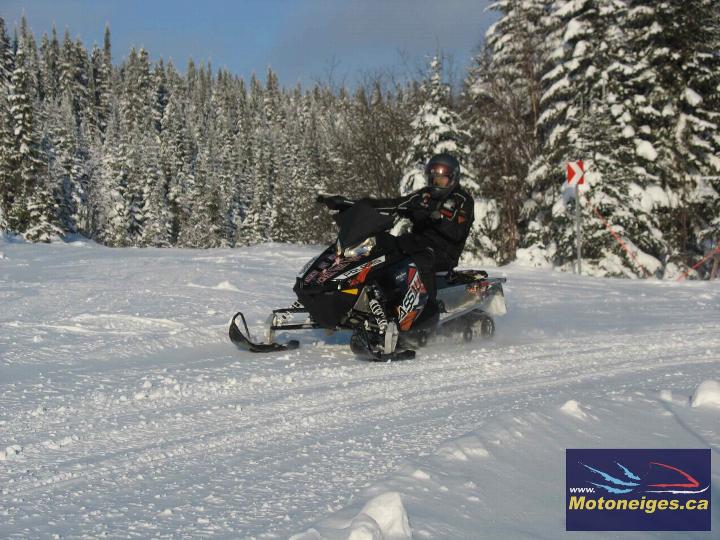The Ontario Provincial Police (OPP) and the Ontario Federation of Snowmobile Clubs (OFSC) remind snowmobilers that no ice can be considered to be 100 percent safe to ride on a snowmobile. This is especially true in early winter when ice is newly forming, during any prolonged period of thaw or rain, and late in the season after ice begins deteriorating from milder temperatures.

To avoid unnecessary risks, the OPP and OFSC recommend that snowmobilers stick to available, land-based OFSC trails whenever possible. OFSC clubs provide many trails that avoid water crossings altogether and also provide many bridges and culverts to pass over known water crossings safely.
If you do make the personal choice to risk travelling on ice by snowmobile, wait until a marked stake line is in place and cross only when you can follow it directly from shore to shore, without stopping on the ice. While ice crossing is never a sure thing, snowmobilers can also reduce their risk by:
Checking ice thickness and quality before riding onto any frozen water.
Understanding that ice conditions may vary from day to day, from hour to hour and from place to place.
Never travelling on ice alone, at night or while impaired.
Avoiding slushy ice, untracked ice, or ice near moving water or dock bubblers.
Watching out for obstacles like rocks, stumps, docks, ice roads and fishing huts.
Wearing a buoyant snowmobile suit and carrying ice picks.
The OPP is committed to saving lives on Ontario’s highways, trails and waterways through the reduction of preventable injury and death. Initiatives are developed and delivered through the OPP Provincial Traffic Safety Program. Visit opp.ca for more information.
The OFSC is committed to proactive leadership in promoting safe, responsible riding, on and off Ontario snowmobile trails, by building safer snowmobiling knowledge, attitudes and behaviours through rider education, safety legislation development and enforcement. For more information, visit ofsc.on.ca.


